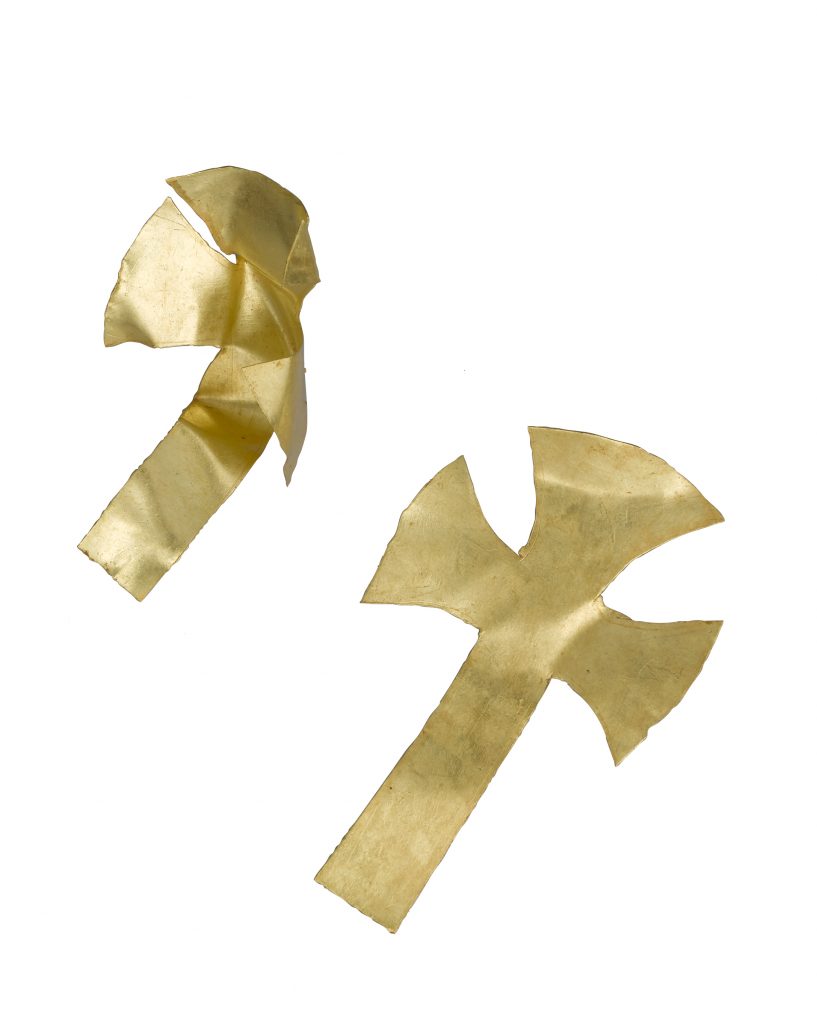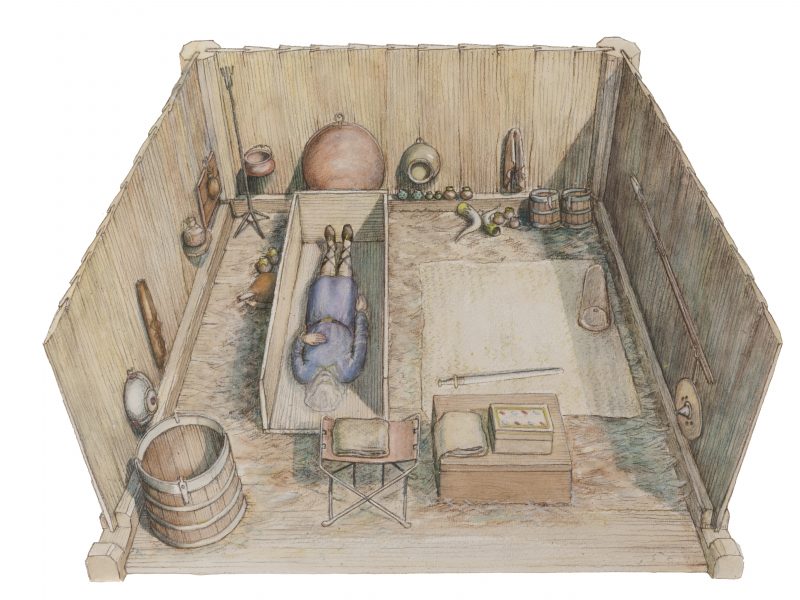Archaeologists have been thrilled at some unique finds in a sixth-century princely burial site near Southend-on-Sea
In 2003 archaeologists from the Museum of London Archaeology excavated a small plot of land in Prittlewell, Essex, for Southend-on-Sea Borough Council. They were astounded to discover an intact Anglo-Saxon burial chamber, adorned with rare and precious objects, many of which have recently gone on permanent display for the first time at Southend Central Museum. But the dig was only the start: since then, MOLA archaeologist have been engaged in painstaking laboratory analysis of what they found. What has this research revealed about the princely burial and the man buried there?
From the moment the first hanging bowl (pictured below) appeared, still in position on the chamber wall, it became apparent that something extraordinary had been found – a miraculously intact, early Anglo-Saxon princely burial chamber. The excavation was relatively short but expertly executed, ensuring all the vital information and material had been gathered so that much more could be learned in the subsequent research phase.
Many of the rare and precious objects found inside the chamber – which also included a Byzantine flagon, an ornate drinking horn (pictured below) and coloured glass vessels – lay concealed beneath centuries of earth and corrosion, and it is only now, thanks to research funded by Southend-on-Sea Borough Council and Historic England, that we have been able to reveal many of the chamber’s secrets. This work has brought together more than 40 experts, including leading figures in the fields of Anglo-Saxon artefacts and art, musical instruments, scientific dating, soil science and engineering, as well as MOLA’s own team of archaeologists, conservators, finds specialists, period specialists, zooarchaeologists and ancient timber specialists.
Analysis of items found within the coffin has revealed exciting new details about who the person buried in the chamber may have been. The presence of weapons and a triangular gold belt buckle suggest this was a man, and items such as gold foil crosses (pictured below) show he was a Christian. Tiny fragments of tooth enamel, the only part of the skeleton to survive, prove he was older than six. From the position of the tooth fragments, gold crosses probably placed over his eyes at one end of the coffin, a gold belt buckle (pictured below) in the middle and garter buckles to fasten his footwear at the other end, we can now estimate that he was about 1.73m (5ft 8in) tall, indicating he was an adult or an adolescent.

Scientific dating suggests that the burial probably dates from the late sixth century, making this the earliest dated Anglo-Saxon princely burial in Britain. The modelled radiocarbon date for the burial was narrowed to 575-605AD and further refined by coins to a date after 580AD. This is a remarkably early date for the adoption of Christianity, as attested by the presence of Christian symbols within the grave.
The new dating evidence throws the identity of the man buried into question. We can be certain that it was a man of princely or aristocratic lineage from the items in the chamber, but earlier suggestions that this could be the burial of the Christian King Saebert (who died about 616AD) must now be ruled out. Experts believe it possible he was a close relative of King Saebert, perhaps his brother Seaxa, but there is no way to know for sure.
One of the most striking discoveries from the chamber is the identification of a wooden lyre, which had almost entirely decayed save for a soil stain within which fragments of wood and metal fittings were preserved in their original position. The lyre (or hearpe, in Old English) was the most important stringed instrument in the ancient world, and this is the first time the complete form of an Anglo-Saxon lyre has been recorded.
Another unique find was the only surviving example of early Anglo-Saxon painted woodwork, in the form of fragments from a 1,400-year-old box lid. Originally lifted by archaeological conservators within a block of soil, detailed micro-excavation in the lab exposed hidden fragments of a painted maple-wood surface. Their design includes a yellow ladder-pattern border that resembles the borders seen on Anglo-Saxon gold-and-garnet jewellery, as well as two elongated ovals, one in white and one in red with cross-hatching perhaps representing fish scales (pictured below).
For the first time some of the chamber’s most impressive items are now on permanent display at Southend Central Museum. The burial chamber can also be explored online with our interactive online chamber at www.prittlewellprincelyburial.org.







